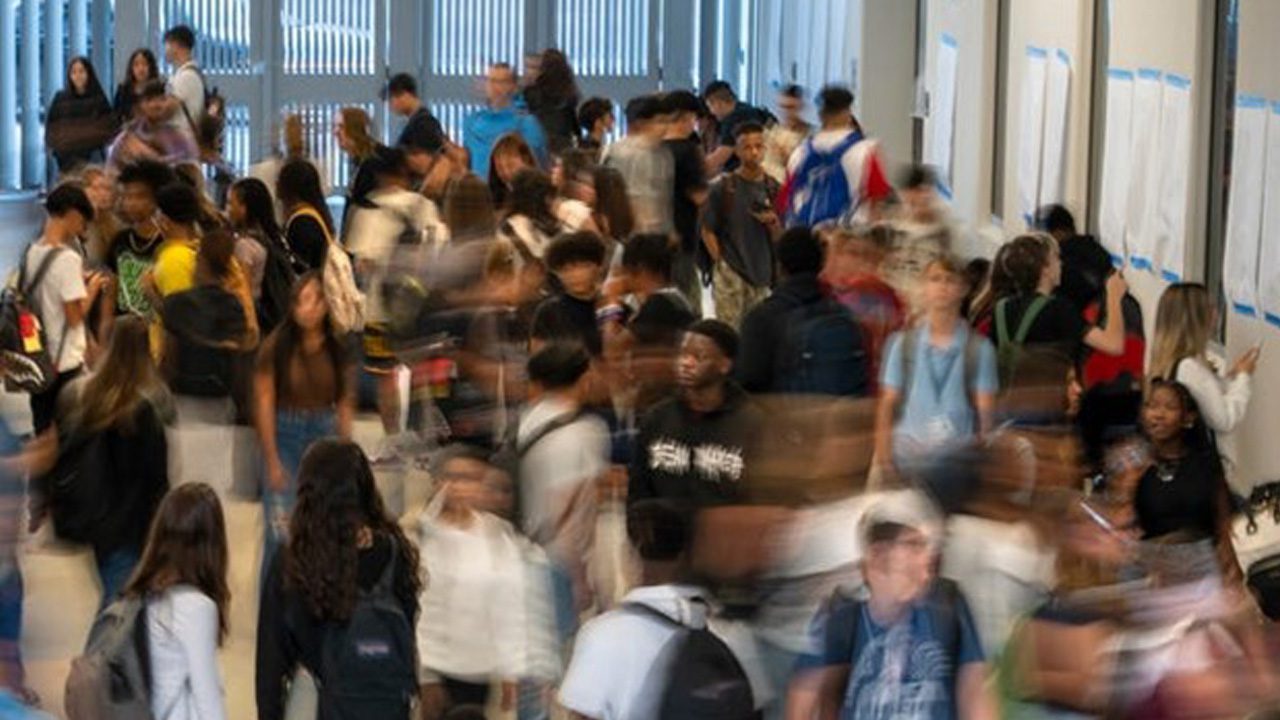
Palm Beach County schools need to start later by 2026. Here are 3 plans to make it happen
Palm Beach Post | By Katherine Kokal | June 4, 2024
A new state law requires Palm Beach County middle and high schools to start no earlier than 8 a.m. and 8:30 a.m., respectively. How will school leaders do it?
A new state law requires later school start times for middle and high schoolers beginning in 2026. Palm Beach County school officials are wasting no time in planning for the overhaul to the school day.
On Wednesday, the school board will hear three different plans for adjusting start times to comply with the new law. The plans need to perfectly balance the requirement for middle school to start after 8 a.m. and high school to start after 8:30 a.m. with student busing needs, after-school activities, athletic practices and rush hour traffic patterns.
School board leaders won’t decide start times during Wednesday’s workshop, but parents and caregivers can weigh in on three options at the workshop and through community input surveys coming later this year. The school board plans to make its final decision in May 2025.
Currently, most district-operated high schools begin around 7:30 a.m., elementary schools begin around 8 a.m. and middle schools begin around 9:30 a.m.
All three preliminary proposals ultimately change start times for all grade levels. One plan moves up elementary start times to 7:30 a.m., while another plan moves middle school start times all the way back to 10:20 a.m.
Lawmakers and Gov. Ron DeSantis passed the school start times law in 2023 in an effort to recognize the impacts of sleep deprivation on school-age children. Students, parents and some researchers have made the argument for later start times for more than a decade.
But districts, particularly large ones with hundreds of schools and hundreds of buses running multiple routes to get children to them, have often hit roadblocks when trying to iron out the logistics. Palm Beach County spans nearly 2,000 square miles and is responsible for more than 182,000 students.
Questions about forcing a child to the bus stop before the sun rises or moving sports practices later in the day complicate the equation.
Here’s what to know about the proposals Palm Beach County leaders will discuss Wednesday:
Option 1: Elementary schools first at 7:30 a.m.
The first option would move elementary start times up by 30 minutes in order to stagger school bus routes:
- Elementary school day: 7:30 a.m. to 1:35 p.m.
- High school day: 8:45 a.m. to 3:45 p.m.
- Middle school day: 10:15 a.m. to 4:50 p.m.
District staff said the plan would result in buses picking up elementary students before dawn beginning around 6:25 a.m. The plan may also force bus drivers to work overtime and create a significantly later start and end time for middle school students.
Middle school would also release during peak rush hour.
Option 2: Middle schools first at 8 a.m.
The second option would push all school start times back past 8 a.m.
- Middle school day: 8 a.m. to 2:35 p.m.
- High school day: 9:15 a.m. to 4:35 p.m.
- Elementary school day: 9:45 a.m. to 3:50 p.m.
This plan would likely require pre-school childcare for elementary students, whose classes start long after the traditional work day. It would also create difficulty for after-school activities for high school students and result in high school drivers being released during peak rush hour.
High school students would need to spend an extra 20 minutes in school to ensure that bus drivers could complete elementary school routes in the afternoon.
Option 3: High schools first at 8:30 a.m.
The third option would maintain the current order in Palm Beach County, but push the whole schedule back by an hour.
- High school day: 8:30 a.m. to 3:50 p.m.
- Elementary school day: 9 a.m. to 3:05 p.m.
- Middle school day: 10:20 a.m. to 4:55 p.m.
This plan would require morning care for elementary school students whose days start around the start of the traditional work day. It would also push the middle school day back significantly, which school staff believe could negatively impact student attendance and school staffing levels.
Middle school students would also be released during rush hour, and high school students would again need to spend an extra 20 minutes in school to ensure that bus drivers could complete elementary school routes in the afternoon.
What does busing have to do with school start times?
Many of Palm Beach County school leaders’ concerns with the later start times deal with restructuring bus routes so that the same drivers can serve all three levels of schools in one, eight-hour day.
Right now, bus drivers work a full day: They pick up and drop off high schoolers in the morning, then elementary schoolers, then middle schoolers. In the afternoon, they pick up and drop off elementary schoolers, then high schoolers and finally middle schoolers.
Any schedule change will need to coordinate pick up and drop off times so the district doesn’t need to hire a massive number of drivers — which Chief Operating Officer Joseph Sanches said could create staffing shortages or a cut in hours for existing drivers.
High school start times need to factor in metal detector use
No matter which plan school leaders choose, they’ll need to leave a small buffer at the start of the school day for high school students to get on campus.
Starting this fall, all high schools will have freestanding metal detectors designed to alert staff to weapons. Students must walk through the metal detectors as they enter campus in the morning.
Several schools participated in pilot programs of the metal detectors last school year. While students reported initial snarls at school entryways, campus leaders said there were few interruptions to the school day once the student body adjusted to the process.
When will school start times change in Palm Beach County?
The new school start times will begin July 1, 2026.
School district leaders hope to have a final plan by May 2025 and spend the summer communicating the new start times to parents and families.
Do later school start times help kids do better in the classroom?
The American Academy of Sleep Medicine recommends teenagers should sleep 8 to 10 hours per night to remain in good health. Without enough sleep, they are more likely to suffer from symptoms of depression, perform poorly in school, and not engage in daily physical activity, according to the academy.
The American Academy of Pediatrics notes that middle and high school days should not start before 8:30 a.m. to give kids time to get the sleep they need.
A 2018 study that examined two public schools in Seattle found that students got an average of 34 more minutes per sleep each night when their start times were pushed back an hour, according to an article in the National Education Association’s online publication, neaToday.
The study also focused on performance in students’ biology courses and found that students whose school day started later earned grades that were 4.5% higher than those of students who took the class when school started earlier, the publication reported.
But other research has found that later school times make much smaller impacts on students’ academic performance.
A 2021 study from researchers at the University of Minnesota followed 18,000 middle and high school students whose schools delayed the start of classes between 20 minutes and an hour. The study found that students’ GPAs rose by an average of just 0.1 point.
“While the researchers categorized the sleep benefits as ‘large,’ the academic improvements were considered ‘small,'” according to the neaToday article.





